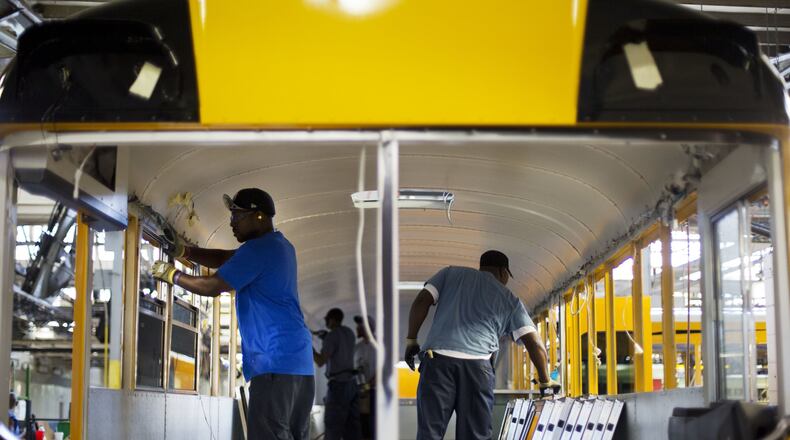Numerous studies and annual statistics consistently show school buses are the safest place to be when traveling on the ground.
But would seat belts, now mandated in only a handful of states, make them safer?
It's a cost benefit debate that arises every time there's a tragedy such as Monday's horrendous crash in Chattanooga, Tenn., that claimed the lives of five elementary school students. Fortunately, such incidents are rare — 53 children were killed across the nation between 2004 and 2014 while riding in school buses. And that's with nearly 500,000 buses traveling a combined 260 million miles each day on U.S. roads, carrying more than 25 million students to and from school, according to the National Transportation Safety Board.
Locally, a 2007 motor coach crash on the HOV ramp at I-75 and Northside Drive that killed the driver, his wife and five members of Bluffton University's baseball team led to major new safety requirements nationwide, including seat belts on motor coaches.
“These kids were like flying missiles,” Dr. Jeffrey Salomone of Grady Memorial Hospital said at the time of the crash, noting that the lack of restraints contributed to the most serious internal injuries.
Despite that, most school buses were exempt from the new regulations. But the Chattanooga crash could be a game-changer.
A Chattanooga lawmaker has already begun the process to draft a law requiring seat belts in all of that state’s school buses, according to The Tennessean.
Rep. Gerald McCormick told the newspaper he will likely push a bill that would retrofit every school bus in the state.
“I know it’s expensive, but that’s the biggest budget item we have in the state — education — and if we can’t guarantee or do as much as we can to guarantee the safety of these kids as they go to and from school, then the rest of it is pretty useless,” McCormick said.
A similar effort was mounted a year ago after two students and a teacher’s aide died in a bus crash in Knoxville. But the proposal failed after many lawmakers complained it was too expensive.
California, Florida, Louisiana, New Jersey and New York are the only states that require seat belts on school buses, according to the Governors Highway Safety Association. Texas requires seat belts on school buses purchased after 2010.
There’s been little such debate in Georgia. Sloan Roach, communications director for Gwinnett County schools, said the way the bus seats are designed negates the need for safety belts.
“Bus seats are compartmentalized and this compartmentalization is what protects students when there is a crash,” Roach said. “National statistics show that it is more than six times safer to transport students in a school bus — even without seat belts — than in their parents’ car that has seat belts.”
A recent University of Alabama study bears that out. It found that schools would do better to adopt more cost-effective safety measures, focusing, for example, on loading and unloading zones, where up to three times more bus-related student deaths occur.
The cost of an “equivalent life saved” from seat belt implementation in Alabama would be $32 million to $38 million, according to the study. The report concluded that the costs far exceeded the net benefits.
But a 2016 study by the NTSB, while stopping short of mandating safety belts, confirms they keep students safer. “Properly worn lap-shoulder belts provide greater benefit by reducing injuries related to upper body flailing,” the report stated.
For Woodward Academy, the decision was a no-brainer, said Nija Meyer, communications director for the College Park private school. Woodward began ordering new buses with both shoulder harnesses and lap belts in 2001 and has received the highest possible safety ratings from the U.S. Department of Transportation.
“They definitely added to the cost of the buses,” Meyer said. “However, it is a moot point because Woodward Academy believed and continues to believe it was absolutely necessary for student safety.”
About the Author
The Latest
Featured



